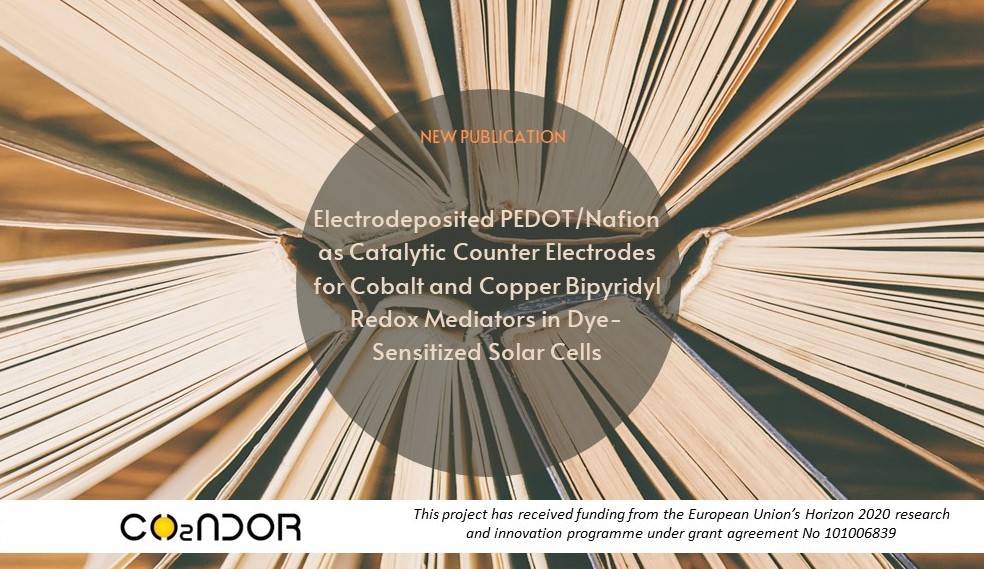
NEW PUBLICATION ON ELECTRODEPOSITED PEDOT
We are glad to promote a new publication prepared with the participation of our partner University of Ferrara entitled “Electrodeposited PEDOT/Nafion as Catalytic Counter Electrodes for Cobalt and Copper Bipyridyl Redox Mediators in Dye-Sensitized Solar Cells”.
PEDOT-based counter electrodes for dye-sensitized solar cells (DSSCs) are generally prepared by electrodeposition, which produces polymer films endowed with the best electrocatalytic properties. This translates in fast regeneration of the redox mediator, which allows the solar cell to sustain efficient photoconversion. The sustainable fabrication of DSSCs must consider the scaling up of the entire process, and when possible, it should avoid the use of large amounts of hazardous and/or inflammable chemicals, such as organic solvents for instance. This is why electrodeposition of PEDOT-based counter electrodes should preferably be carried out in aqueous media. In this study, PEDOT/Nafion was electrodeposited on FTO and comparatively evaluated as a catalytic material in DSSCs based on either cobalt or copper electrolytes. Our results show that the electrochemical response of PEDOT/Nafion toward Co(II/III-) or Cu(I/II)-based redox shuttles was comparable to that of PEDOT/ClO4 and significantly superior to that of PEDOT/PSS. In addition, when tested for adhesion, PEDOT/Nafion films were more stable for delamination if compared to PEDOT/ClO4, a feature that may prove beneficial in view of the long-term stability of solar devices.
The publication can be accessible at the following link: